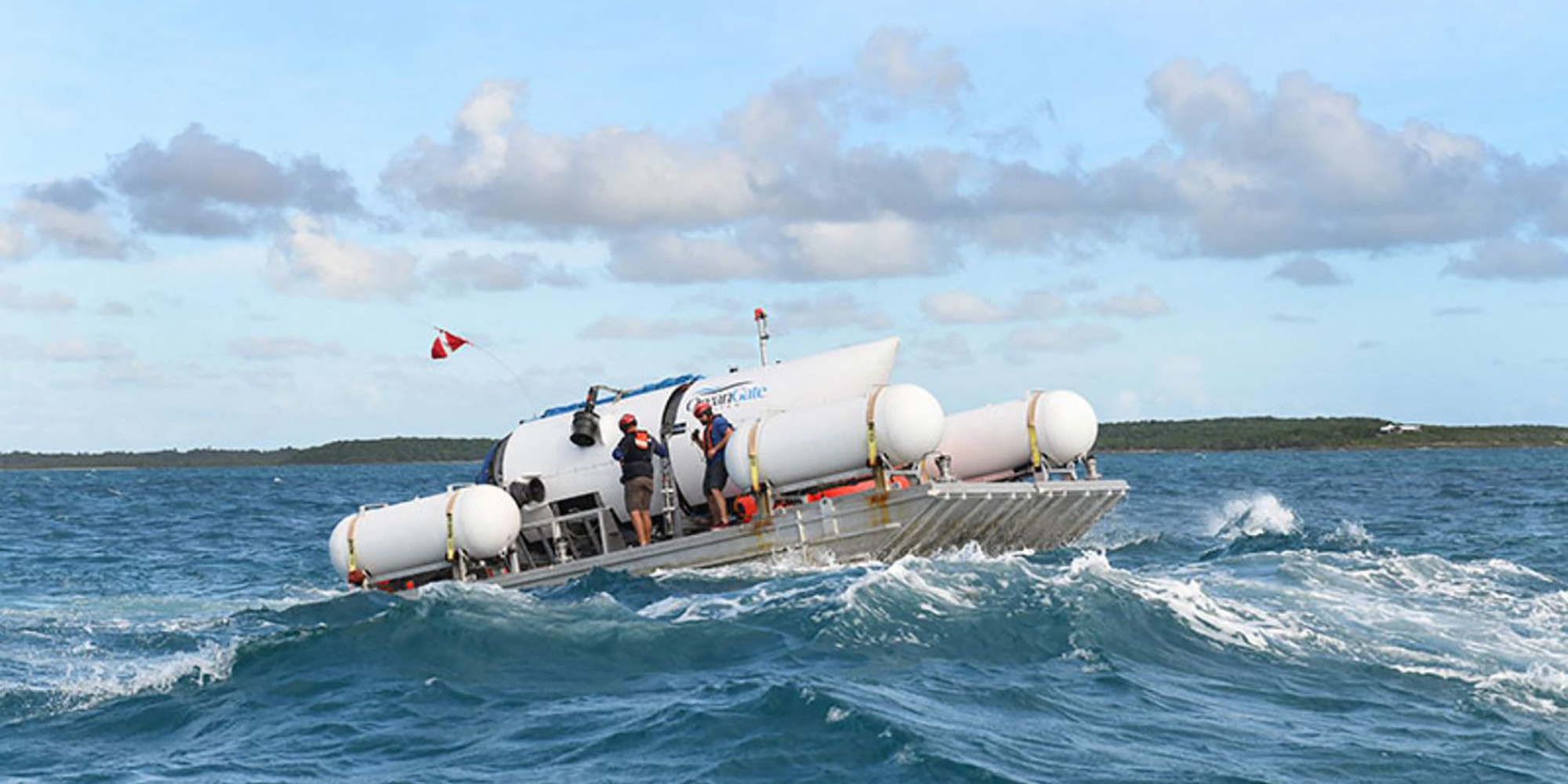The U.S. Coast Guard said on Thursday it was continuing “rescue” operations of a submersible and its five missing occupants near the wreck of the Titanic, despite the feared depletion of oxygen supplies.
“We continue to see in particularly complex cases that people’s will to live must genuinely be taken into account as well. And so we continue to search and continue our rescue efforts,” Rear Admiral John Mauger told Reuters. head of search operations at NBC. “And so we continue to search and continue our rescue efforts,” he added.
Rescuers had estimated at 11:08 GMT the time at which passengers could be short of oxygen aboard the Titan, a small deep-sea explorer from the private American company OceanGate Expeditions. Missing since Sunday, the machine has a theoretical autonomy of 96 hours in diving.
Wednesday’s announcement of the detection of underwater noises by Canadian P-3 planes raised hopes and oriented the multinational armada of rescuers dispatched to the scene, without the origin of the noises being determined.
“Main Hope”
Aerial surveillance using C-130 or P3 aircraft, ships equipped with underwater robots: the means deployed in particular by the American and Canadian armies continue to arrive at the site where the Polar Prince, the ship of which is stationed departed the submersible Titan.
The Atalante, a French research vessel from Ifremer, arrived on site early Thursday, we learned from the French Research Institute for the Exploitation of the Sea. It is equipped with a robot , the ROV Victor 6000, capable of diving down to the wreck of the Titanic, which lies nearly 4,000 meters deep.
The Victor 6000 is the “main hope” for an underwater rescue operation, Rob Larter, an expert with the British Antarctic Survey (BAS, a Cambridge-based British research body), told reporters. The surface search area covers 20,000 square kilometres.
According to Captain Jamie Frederick of the US Coast Guard, “the location of the research, 1,450 km east of Cape Cod (on the northeast coast of the United States, editor’s note) and 640 km southeast of Saint John of Newfoundland (in Canada), makes it exceptionally difficult to rapidly mobilize large quantities of equipment”.
An American, a Frenchman, a Briton and two Pakistani-Britons are immersed Sunday morning aboard the Titan, about 6.5 meters long. He was to resurface seven hours later but contact was lost less than two hours after he left. Tuesday noon, the US Coast Guard had warned that there were “about 40 hours of breathable air” on board.
Potential negligence
Since the search began on Sunday, details implicating OceanGate have emerged over potential safety negligence on the underwater tourism device. A 2018 complaint seen by AFP says a former company executive, David Lochridge, was fired after raising serious doubts about the safety of the submersible. According to this former director of marine operations, a porthole at the front of the device was designed to withstand the pressure suffered at 1,300 m depth and not at 4,000 m.
The boss of OceanGate, the American Stockton Rush, is on board, alongside a wealthy British businessman, Hamish Harding (58), French Titanic specialist Paul-Henri Nargeolet (77) – nicknamed “Mr. Titanic” – by Pakistani tycoon Shahzada Dawood (48) and his son Suleman (19) – both of whom also have British nationality.
For 250,000 dollars, they embarked on an exploration of the remains of what was one of the greatest maritime disasters of the 20th century. The Titanic sank on its maiden voyage in 1912 after crashing into an iceberg, killing nearly 1,500 passengers and crew. Since the discovery of the wreck in 1985, scientists, treasure seekers and tourists have visited it, thus maintaining the myth
